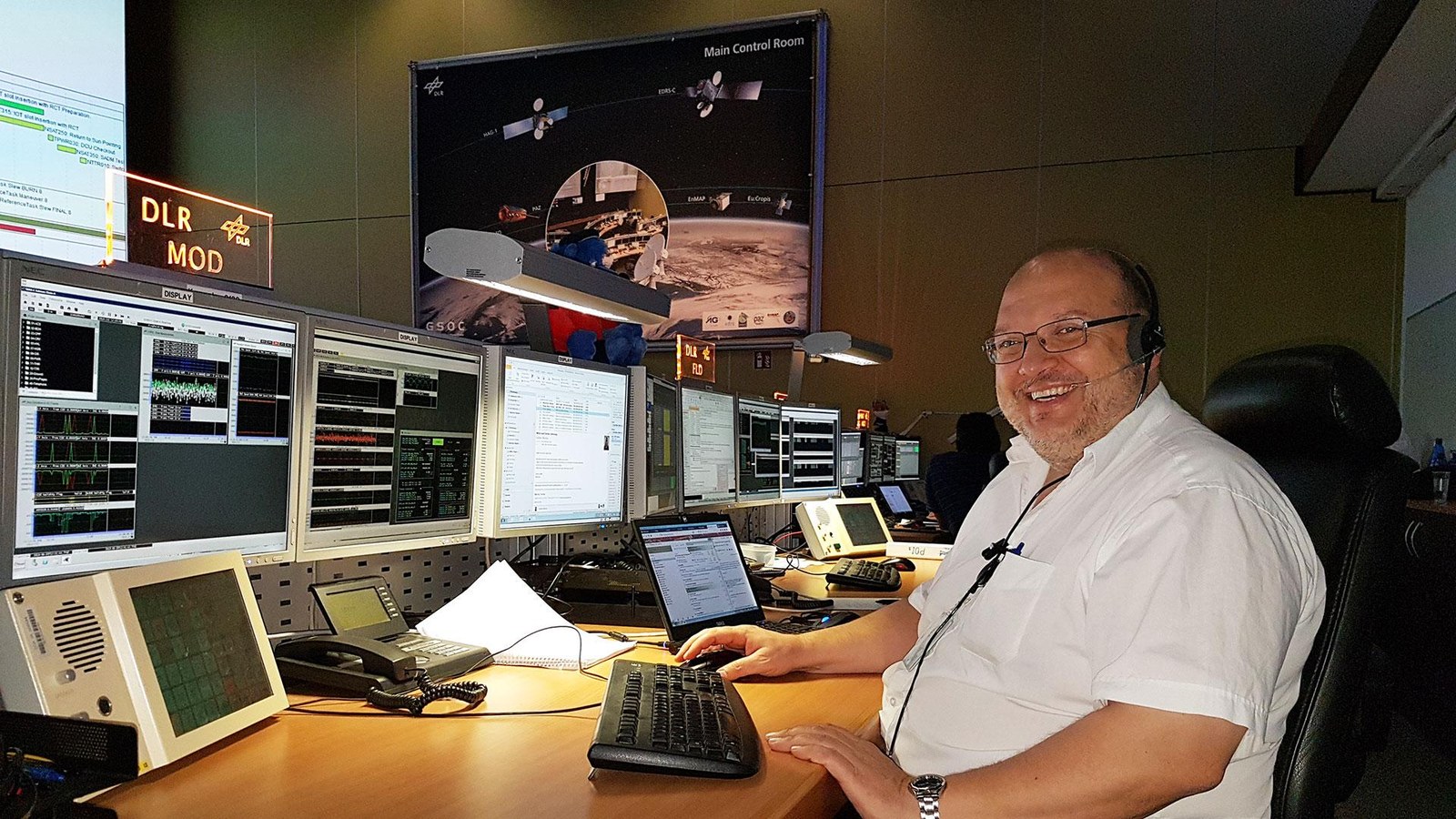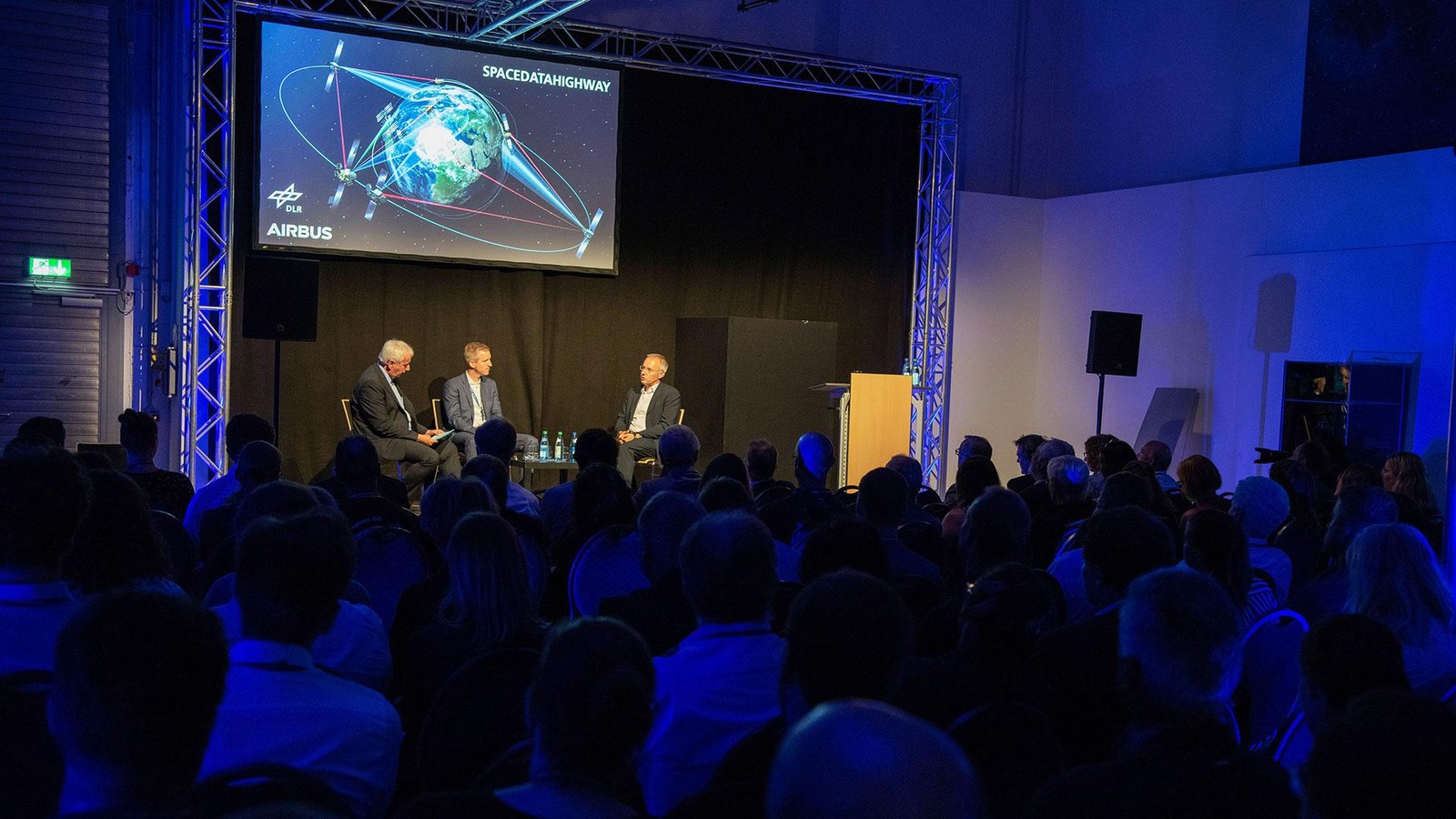Interview with Ralf Faller about EDRS operations



Focus: Space, digitalisation, Big Data
The EDRS-C satellite was successfully launched at 21:30 CEST on 6 August 2019. After receiving the first telemetry data, the German Space Operations Center (GSOC) took over operation of the satellite. Now that the first critical launch phase with several orbital manoeuvres has been completed EDRS-C can enter the test phase. The German Aerospace Center (Deutsches Zentrum für Luft- und Raumfahrt; DLR) project manager in charge is Mission Operations Director Ralf Faller.
Interview by Bernadette Jung and Daniela Höpfl
Mr Faller, the launch of EDRS-C was an exciting time for all those who witnessed it. What was your experience of the launch in the control room?
I can still remember my first launch – a communications satellite for Eutelsat in the early 1990s – and the moment when the rocket lifted off. It is still exciting for me. My responsibilities in the control room have grown over the years, but the tension is still the same. As project manager on behalf of DLR, I am the Mission Operations Director for the duration of the mission. A satellite launch such as this puts me under a lot of stress. You feel the urge to do everything yourself, all the time, but it goes without saying that this is simply impossible on such a large project. That is why I have to trust my team, and I know that I can do just that. It is important that I have an overview and that I allow my colleagues to get on with performing their tasks. In this way, we can achieve an optimal result and make sure, to the best of our abilities, that nothing goes wrong. As a beginner, starting your career, you might only have a small task, such as running software that you have written. But I was just as proud to sit in the control room back then as I am now.
How many years have gone by since then, and what do you still find fascinating about your work?
I have now been working at GSOC for almost 30 years. I started off in the Spaceflight Dynamics Department, but even then, I was interested in the overall operational processes and ended up switching to mission operations. Controlling satellites is simply a very interesting technical field. Satellites are complicated systems that can only be operated 'remotely'. This means that a radio link is the only way of contacting them in order to receive telemetry data and to send commands to the satellites. You cannot access the satellites directly, because they are so far from Earth. This still fascinates me to this day. Of course, all of this requires very good preparations because, once a satellite is launched, it is no longer possible to change anything. Once it is up, it is up.
What is the next step with EDRS-C?
After the launch of the Ariane-5 rocket and the deployment of the satellite, it was important to achieve a stable connection with the satellite. We managed to do this, although at the beginning it presents the biggest challenge to establishing secure satellite operations. Over the last few days, we have carried out a total of five orbital manoeuvres. Now the satellite is in a temporary position in geostationary orbit, which allows us to carry out comprehensive functional tests. This phase will last several weeks. Only then will EDRS-C be fully operational and can be moved to where it is required to operate in the future.
What are your responsibilities as MOD, or Mission Operations Director?
Among other things, I am responsible for ensuring that the initial phases of operation – Launch and Early Orbit Phase (LEOP) and In-Orbit Testing (IOT) – run smoothly. I also have to make sure that routine operations commence without any issues. Each project has certain requirements that have to be met. My colleagues in Weilheim have had to set up the two main antennas for EDRS. Those of us in Oberpfaffenhofen have had to set up the rest of the ground segment – including the control rooms, the IT infrastructure and the necessary software systems – and assemble and train the operations team for the mission. Of course, I do not do everything on my own. I coordinate the work and interact with the other departments involved in the project. I try to keep everything together and I am in direct contact with the client. As MOD and project manager, I also have to report back and keep an eye on the costs incurred, so I try to maintain an overview of everything.
What do you see as the biggest challenges?
The preparations were extremely intensive. It was essential to meet the system requirements. At the same time, I had to keep track of the costs, as I mentioned before, while adhering to the schedule and fulfilling the client's wishes. What is more, I am also responsible for ensuring that the team works together. Approximately 40 staff members from different departments work in the core EDRS-C project team. I am an engineer and have a technical background, but I have noticed that it is people who make good results possible. This project involves highly qualified, very intelligent people with their own individual characteristics. First and foremost, good teamwork is what leads to successful space endeavours. Helping to ensure that everything in the team runs smoothly is an important and, at the same time, enjoyable aspect of my work. After all, spaceflight is the outcome of the efforts of many people.
What is the lifespan of EDRS-C, and will you be responsible for its operation for that entire time?
The satellite is designed for 15 years of operation. GSOC will manage the communications satellite and the payload the whole time. Normally, propellant is the limiting factor for geostationary satellites. After 15 years, EDRS-C will use its reserved residual fuel to move up into a 'graveyard orbit', 300 kilometres higher, and will be deactivated. I will probably not be in active service any more at that point. That is a pity, but I always say that I feel most comfortable where I am right now. You never know what is just around the corner – I would drop everything for an interplanetary mission, perhaps to the Moon. But at the moment, our task is to make sure that EDRS-C can begin routine operations. We have been preparing for this for a long time, training on countless simulations in the control room, and I am delighted that we can now work with the real satellite in orbit.
EDRS-C
The communications satellite is at the heart of the European Data Relay System (EDRS), which transmits large amounts of data from space to Earth in the shortest possible time, primarily via satellite laser terminals. EDRS is a public-private partnership between the European Space Agency (ESA) and Airbus Defence and Space. The satellite, as well as the payloads and receiving stations, are operated by the German Aerospace Center (Deutsches Zentrum für Luft- und Raumfahrt; DLR) German Space Operations Center (GSOC) in Oberpfaffenhofen.
